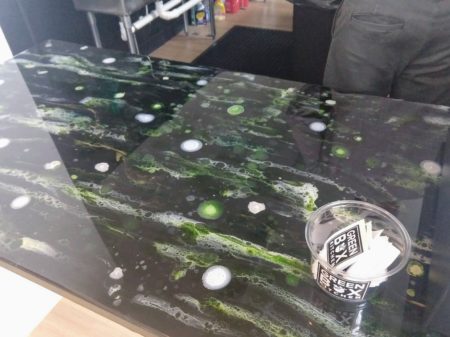A new executive team, flush with investor capital, pulls together a group of highly skilled experts to build out a plan and operational strategy for a new digital healthcare platform. Each member of the nine-person leadership team was brought in for their specialized skills and experience, some from the startup world, others from established tech companies.
Teams are hired, plans are announced, prototypes are drawn up and shopped around. And energy is high … for a while. Gradually, the air begins coming out of the balloon. People begin retreating into “individual contributors” mode, trying to execute their never-ending list of tasks, some of which seem to diverge from the company’s core mission.
In scholar Bruce Tuckman’s stages of group development model — forming, storming, norming, performing and adjourning — this is the forming stage. And most young companies, and teams, experience this in one form or another. Leaders familiar with this reality proactively navigate their teams through the subsequent storming, norming and performing stages as efficiently as possible. The best leaders prepare their teams for these stages in advance to help normalize emotions during the journey.
Most work of any real consequence today is done in teams. That’s especially true in tech. But what exactly distinguishes a team from, say, a co-active group? And, how do we know what kind of a team we are today, and what kind of team we need to become in order to drive value?
###
The primary thing that defines a team in “interdependency.” Team members must rely on each other to some degree for their mutual success. Beyond that, of course, are a clear and aligned sense of purpose, and clear roles and priorities.
When we ignore the need for team chemistry, cohesion, purpose, trust, support, communication and connectivity, we do so at our own peril.
There are many other attributes that define high-performing teams — attributes that can be measured and improved upon. Whether we’re coaching executives one on one, or working directly with teams, understanding where you are today, and where you need to go, is step one.
As a member of a design team organized by our friends at AIIR Consulting, I was tasked with helping to build a model for delivering team performance programs a few years back. We asked some compelling questions of our clients. Some questions were quite simple in nature but provided valuable insights into the dimensions of team performance.
For example, how well does the team get things done, and why … or why not? What does it feel like to be on this team, and why? In order to measurably move the needle on team performance, it’s helpful to understand the attributes associated with their level of productivity and the strength of their culture.
Here’s a little exercise. See if you can determine the type of team you’re on, based on the following descriptions:
- Frozen Team — Low productivity, weak culture (unfocused, low accountability, lack of interpersonal connectivity)
- Comfortable Team — Low productivity, strong culture (friendly, trusting environment, avoids hard decisions, inefficient, misaligned priorities)
- Driven Team — High productivity, weak culture (focus on tasks and results, established roles and processes, lack of dialogue or collaboration, unproductive conflict)
- High-Performing Team — High productivity, strong culture (clear purpose, priorities, roles, support, trust and communication)
Chances are, you fluctuate between two of these types team most of the time. A more formal assessment will tell you more about the type of team you’re on, and the degree to which team members are aligned.
###
From a leadership standpoint, there’s a lot that goes into assembling the right team. History has taught us that putting a group of “experts” together to achieve a goal is just not enough. When we ignore the need for team chemistry, cohesion, purpose, trust, support, communication and connectivity, we do so at our own peril.
Teams are more effective and achieve better results when they take the time to align around a core purpose and priorities, understand each other, and create an environment of trust and authentic communication. Understanding behaviors associated with each of these domains allows teams to vastly improve both culture and productivity, clearing a path to high performance.
Companies are nothing more than networks of relationships. That’s why investing in those relationships to improve connectivity and team cohesion makes so much sense.
The cost associated with team dysfunction is hard to quantify, but it’s staggering. Project failures, wasted time, errors leading to mistrust … leading to more errors. The opportunity cost alone can bring a company to its financial knees.
Companies are nothing more than networks of relationships. People hold individual perspectives, biases and experiences. That’s why investing in those relationships to improve connectivity and team cohesion makes so much sense.
Over the years, I’ve seen dysfunctional teams evolve into cohesive units who actually enjoy working together and are mission focused. And, often it’s because the leadership committed the time and energy.
The path to team effectiveness does not require an advanced degree. Along with the programmatic approaches we take to achieve sustainable results, I remind leaders never to underestimate the value of shared experiences, like dinners (especially prepared together), and other relaxed social gatherings to provide the necessary glue (read: fun) we all need to blend into our work.
In sum, the most important thing for leaders to keep in mind when building their teams is our innate need for personal connection and social interaction, elements that now more than ever, add real meaning to our work — and our lives.
Join the conversation!
Find news, events, jobs and people who share your interests on Technical.ly's open community Slack

Baltimore daily roundup: Medtech made in Baltimore; Sen. Sanders visits Morgan State; Humane Ai review debate

Baltimore daily roundup: The city's new esports lab; a conference in Wilmington; GBC reports $4B of economic activity

Baltimore daily roundup: Find your next coworking space; sea turtle legislation; Dali raided and sued


